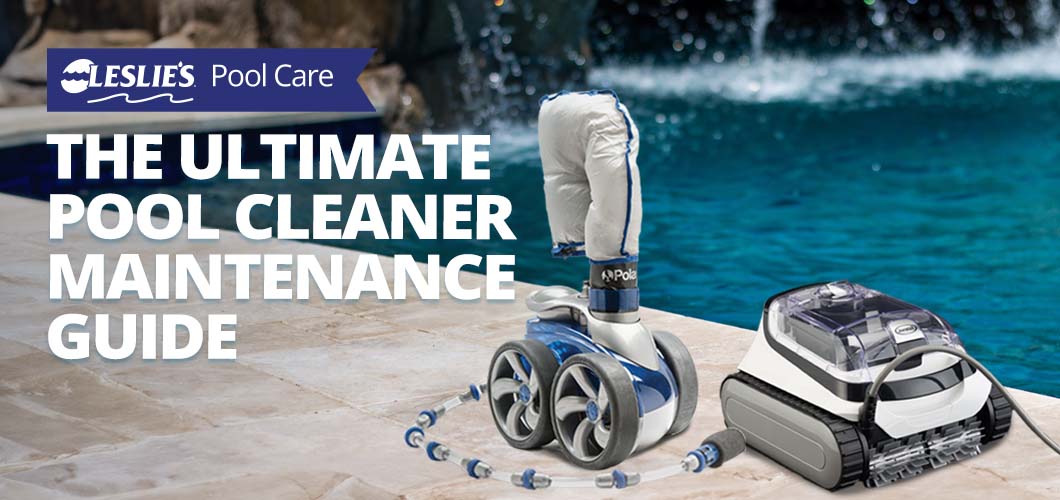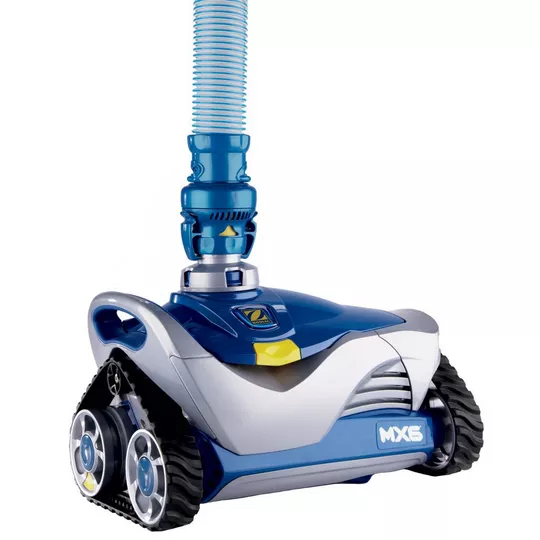
The Ultimate Automatic Pool Cleaner Maintenance Guide
Maintaining your automatic pool cleaner is essential for ensuring that your pool remains clean and inviting all season long. Whether you're a seasoned DIY pool owner or a first-time pool enthusiast, this guide will provide you with everything you need to know about pool cleaner maintenance. From understanding the different types of cleaners to troubleshooting common issues, we’ll cover it all!
Understanding Your Automatic Pool Cleaner

Before diving into maintenance, it’s important to understand the various types of automatic pool cleaners available. Each type has unique features and maintenance requirements, so let’s break them down.
Types of Automatic Pool Cleaners
- Suction Side Cleaners
- These cleaners attach to your pool's skimmer and utilize suction to collect debris. They are generally easy to use and require minimal setup.
- Maintenance Tip: Regularly check the skimmer and pump baskets for blockages to maintain optimal suction.
- Pressure Side Cleaners
- These cleaners operate using a booster pump and use water pressure to propel themselves around the pool. They typically have a bag for collecting debris.
- Maintenance Tip: Inspect hoses and bags frequently to ensure they are free from clogs.
- Robotic Pool Cleaners
- These independent units run on electricity and feature built-in filtration systems. They are highly efficient and can clean the pool floor and walls.
- Maintenance Tip: Clean the internal filters and brushes regularly to keep them functioning effectively.
Understanding these types will help you decide which cleaner is best for your pool and how to maintain it properly.
The Importance of Regular Maintenance
Just like your car needs regular servicing, your automatic pool cleaner requires consistent upkeep to function at its best. Neglecting maintenance can lead to reduced cleaning efficiency, increased wear and tear, and costly repairs.
Benefits of Regular Maintenance
- Prolongs Equipment Life: Regular checks and cleaning can extend the lifespan of your pool cleaner.
- Improves Efficiency: A well-maintained cleaner will operate more effectively, keeping your pool cleaner.
- Saves Money: Preventative maintenance can help you avoid expensive repairs down the line.
By dedicating time to maintenance, you can enjoy a cleaner pool and a more enjoyable swimming experience.
Weekly Inspection Checklist

A consistent inspection routine is key to keeping your automatic pool cleaner in top shape. Here’s a handy checklist to guide your weekly inspections:
1. Check for Damage
Inspect hoses, wheels, and other components for cracks or wear. Replace any damaged parts immediately to prevent further issues.
2. Ensure Proper Suction (for suction-side cleaners)
Make sure the suction is strong by checking for blockages in the skimmer and pump baskets.
3. Inspect the Filter
Clean or replace filters as needed, especially if you notice reduced suction or cleaning performance.
4. Verify Moving Parts
Test the wheels and brushes to ensure they’re moving smoothly. Worn-out parts can hinder cleaning efficiency.
5. Check Hoses for Leaks
Look for kinks or holes in the hoses. Damaged hoses can significantly impact performance.
By following this checklist, you can catch potential issues early and keep your cleaner running smoothly.
Seasonal Maintenance Tasks

As the seasons change, so do the maintenance needs of your pool cleaner. Here’s a breakdown of essential seasonal maintenance tasks.
Spring Maintenance
- Deep Clean the Cleaner: Remove any debris and clean the filters and brushes thoroughly.
- Inspect Hoses: Check for any wear and tear that might have occurred during the winter months.
- Test the Power Supply: Ensure the power supply is functioning correctly and is safely positioned away from water.
Summer Maintenance
- Monitor Water Chemistry: Keep an eye on your pool’s chemical balance, as imbalances can affect your cleaner's performance.
- Frequent Cleanings: With more debris in the pool, you may need to run your cleaner more often.
Fall Maintenance
- Prepare for Winter: Clean the cleaner and store it in a dry, shaded area to protect it from the elements.
- Inspect for Damage: Check for any signs of wear that may have developed over the summer.
Winter Maintenance
- Winterize Your Cleaner: If you live in a colder climate, follow the manufacturer's instructions for winterizing your cleaner to prevent damage from freezing temperatures.
By adapting your maintenance routine to the seasons, you can ensure your automatic pool cleaner remains in excellent condition year-round.
Troubleshooting Common Issues
Even with regular maintenance, you may encounter some common issues with your automatic pool cleaner. Here’s how to troubleshoot them effectively.
1. Poor Suction
- Possible Causes: Blocked skimmer or pump baskets, clogged filters, or damaged hoses.
- Solution: Clear any blockages and check for leaks in the hoses.
2. Cleaner Gets Stuck
- Possible Causes: Obstacles in the pool, tangled hoses, or a malfunctioning drive mechanism.
- Solution: Remove any debris from the pool and untangle hoses. If the problem persists, inspect the drive mechanism.
3. Cleaner Doesn’t Move
- Possible Causes: Power supply issues or internal component failures.
- Solution: Check the power source and inspect internal components for damage.
4. Reduced Cleaning Performance
- Possible Causes: Worn brushes or filters, or an obstructed path.
- Solution: Replace worn parts and ensure the cleaner has a clear path to navigate.
By recognizing these issues and knowing how to address them, you can keep your pool cleaner functioning optimally.
Maintaining your automatic pool cleaner is vital for enjoying a clean and inviting pool all summer long. By following this guide, you can ensure that your cleaner operates efficiently and effectively. Remember, regular maintenance, seasonal checks, and knowing when to seek professional help are key to keeping your pool cleaner in top shape. Stop by your local Leslie’s to take advantage of our FREE pool cleaner inspection and repairs! We'll cover the labor, you just pay for parts.